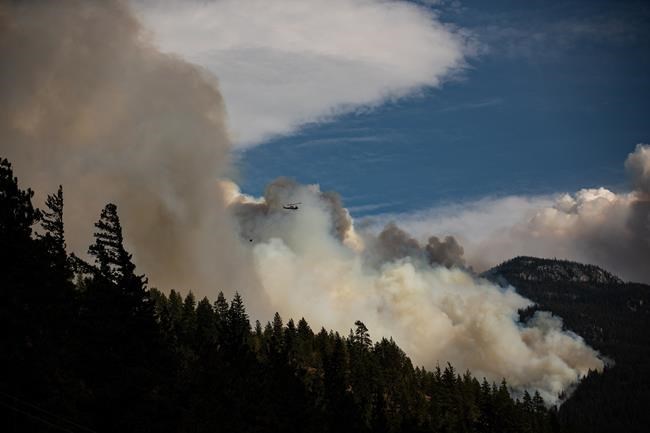FORT ST. JOHN, B.C. — Officials are urging residents and others to evacuate the areas surrounding two out-of-control wildfires in northeastern British Columbia near the Alberta border, in response to reports that some have stayed behind or ventured toward the blazes.
The Peace River Regional District said it has received reports that some residents living in areas under an evacuation order due to the Boundary Lake and Red Creek wildfires have "decided to stay behind" for unspecified reasons.
District board chair Leonard Hiebert said there has also been reports of others driving into the wildfire area, located about 1,300 kilometres northeast of Vancouver.
"This is impeding the response and putting their lives and the lives of firefighters at risk," Hiebert said. " … I personally don't know why they are driving in there, and I don't know how many are."
In a statement issued Saturday, the district said that strong winds were "expected to contribute to the continued growth" of both the Boundary Lake and Red Creek wildfires for the next 24 to 48 hours.
On Sunday, the Boundary Lake wildfire near Goodlow, B.C., grew from 1,900 to 3,000 hectares, while the Red Creek blaze encompassed 1,550 hectares near Fort St. John, B.C.
The fires, which were discovered Friday, have placed 164 properties in total — 103 for Boundary Lake, 61 for Red Creek — under mandatory evacuation order. Another 397 properties are on alert for evacuation on short-notice, district officials said.
The regional district's area that covers both Boundary Lake and Red Creek has declared a state of local emergency to allow it to respond quicker to the wildfires.
Hiebert said it is understandable that residents in the fire area may be reluctant to leave because they also raise livestock on their properties. Those who evacuate their properties usually have to leave livestock behind, he said.
The regional district, Hiebert said, is working on creating permits to facilitate emergency personnel re-entry into the fire zone to check on the welfare of the animals — but only if the wildfire situation allows.
"At this time, it is not safe to do so," he said.
Those who decide to stay behind despite the evacuation order, Hiebert said, must be 19 or older and must remain on their properties.
Natural Resources Canada's fire danger map for western Canada improved significantly on Sunday, with Alberta no longer covered almost entirely under the extreme danger zone as it was on Saturday.
A third wildfire 700 kilometres to the south of the Peace River region blazes, at Teare Creek, also continued to burn on Sunday.
The BC Wildfire Service, however, said the blaze was under control and unlikely to spread, while the evacuation orders and alerts for residents near the village of McBride have been rescinded.
This report by The Canadian Press was first published May 7, 2023.
Chuck Chiang, The Canadian Press

